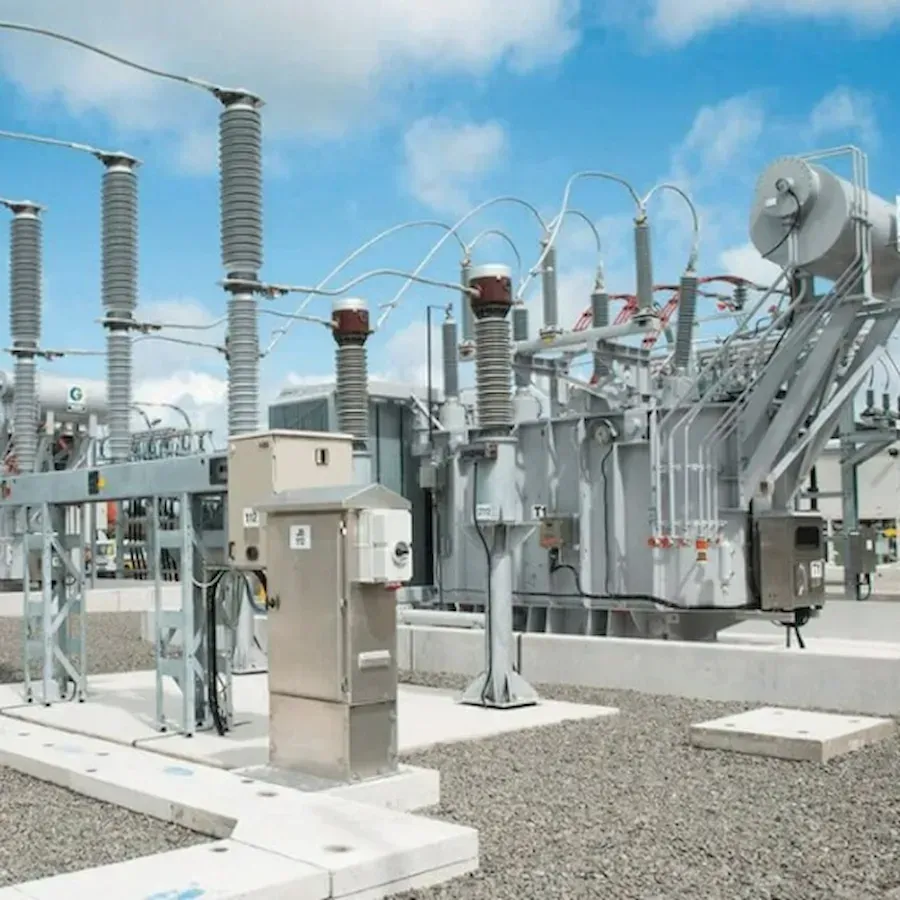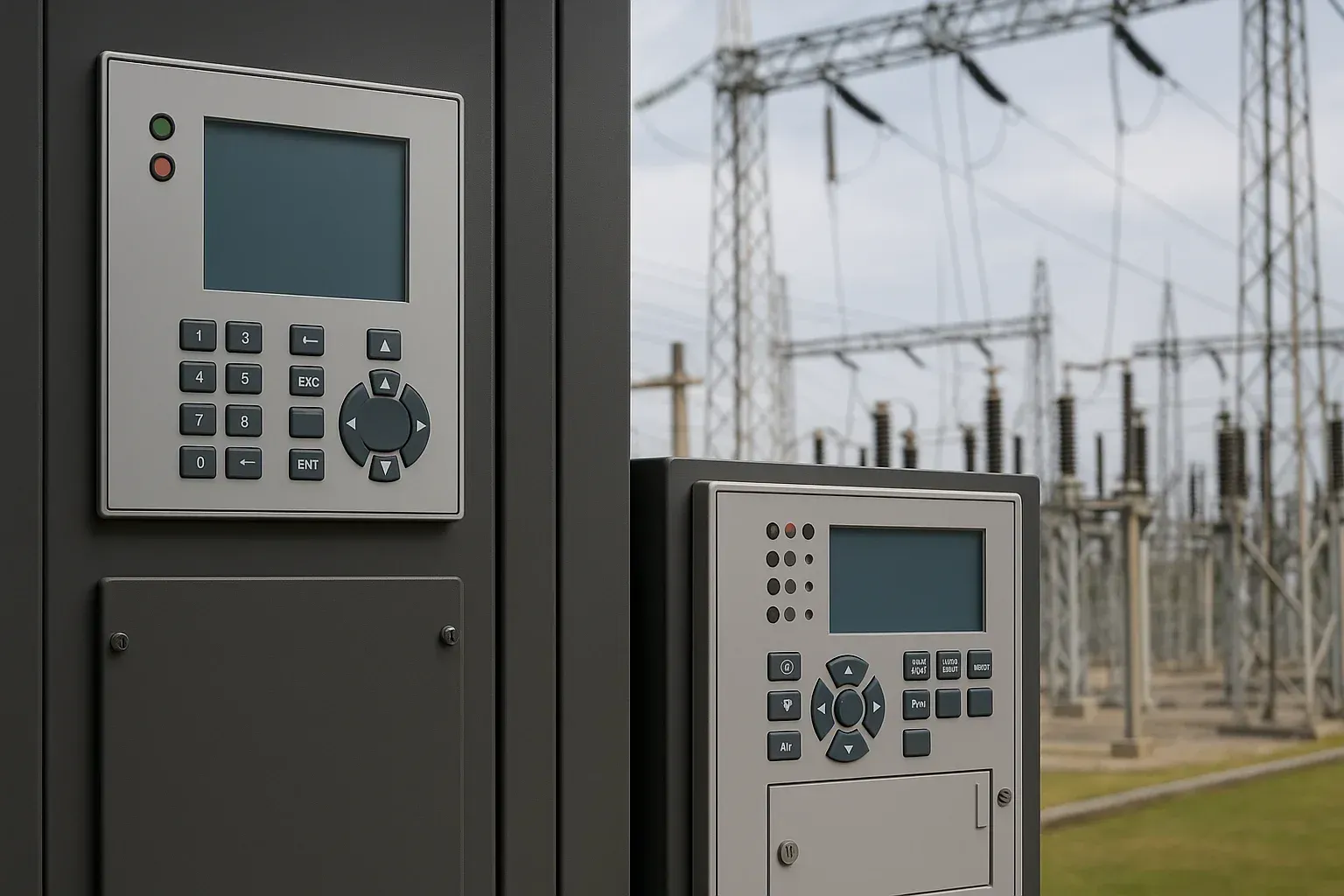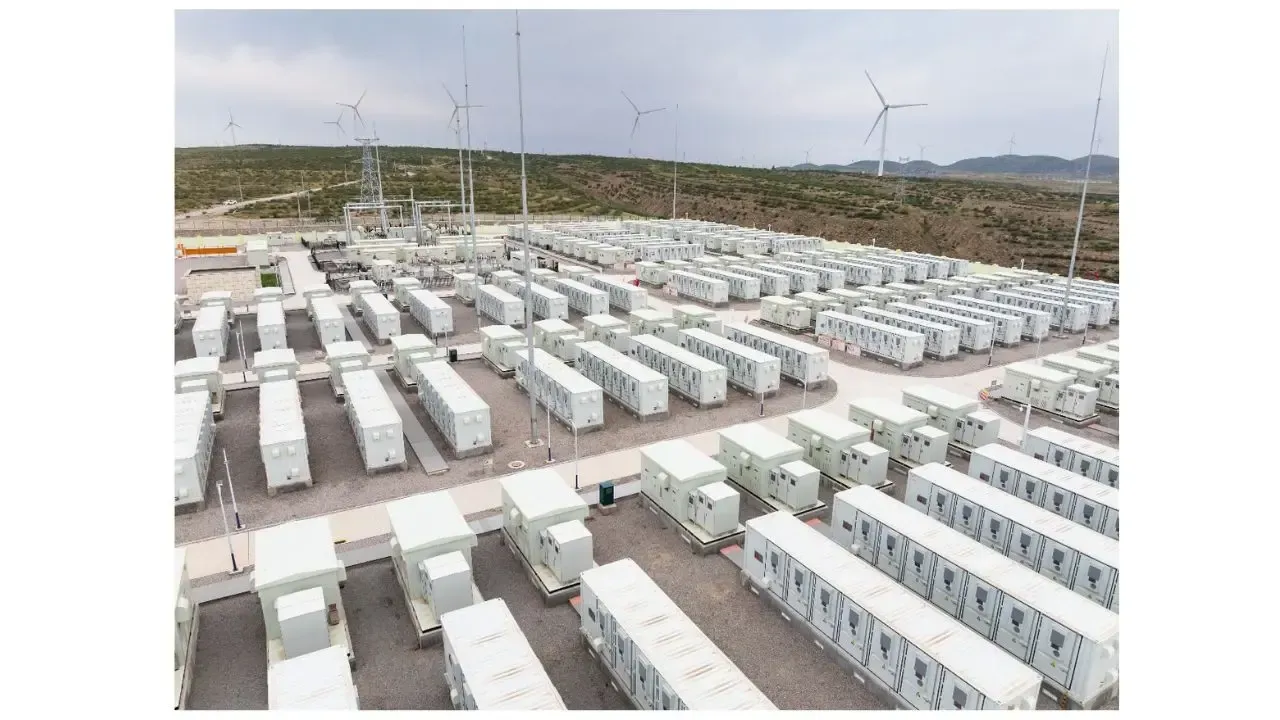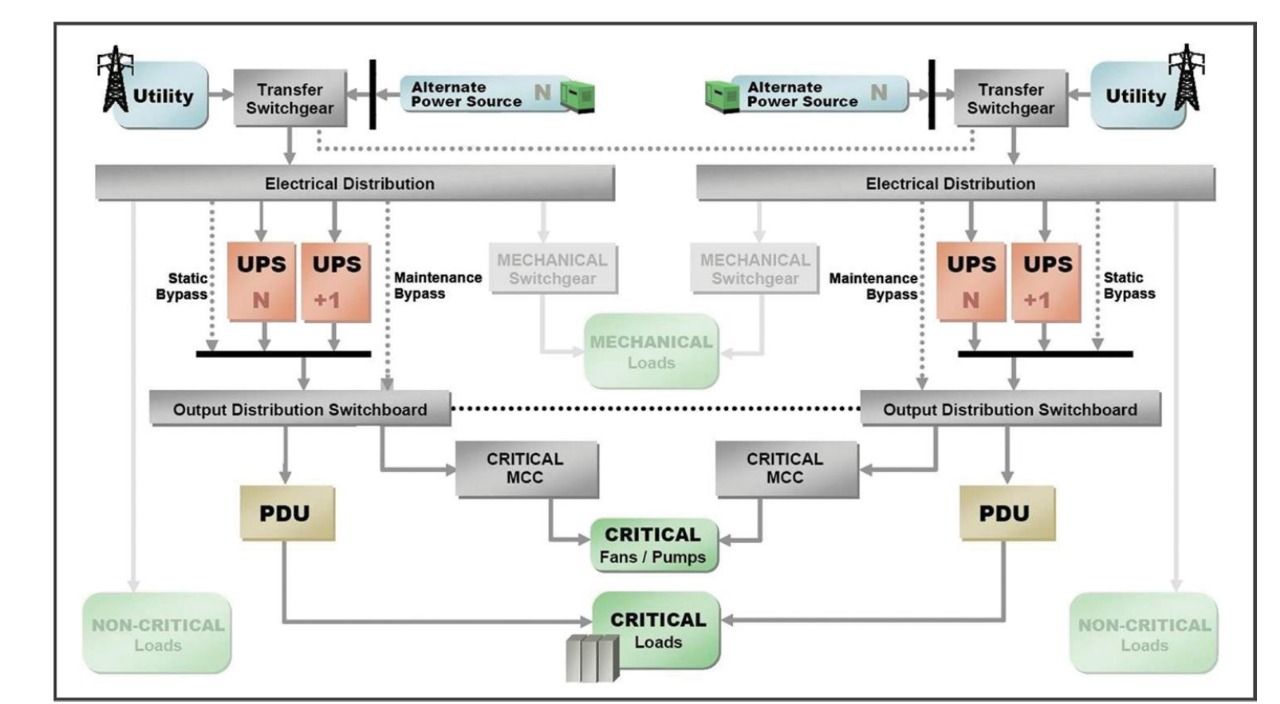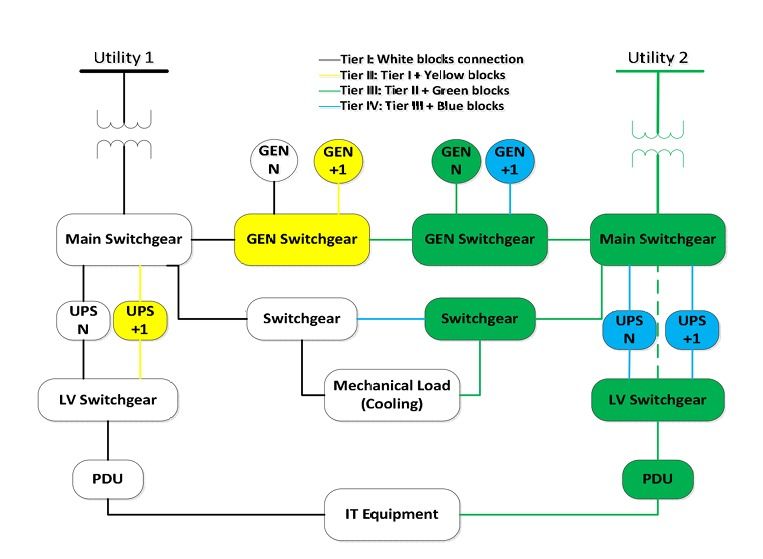A Coordinated Electric System Interconnection Review—the utility’s deep-dive on technical and cost impacts of your project.
Challenge: Frequent false tripping using conventional electromechanical relays
Solution: SEL-487E integration with multi-terminal differential protection and dynamic inrush restraint
Result: 90% reduction in false trips, saving over $250,000 in downtime
NERC PRC-019 Compliance: Engineering Coordination for Protection and Voltage Regulation
July 28, 2025 | Blog
Introduction
The reliability of our electric grid depends on one crucial coordination — between voltage regulating systems and protection systems in generating facilities. To address vulnerabilities exposed during major events like the 2003 Northeast blackout, the North American Electric Reliability Corporation (NERC) introduced PRC-019, a critical standard focused on preventing unnecessary generator trips and ensuring grid stability.
At
Keentel Engineering, we specialize in providing utility-grade PRC-019
compliance support for both synchronous generators and asynchronous/DG units. Our engineering team applies field-proven methodologies, coordination plots, and standards-based analysis to help generator owners and developers meet PRC-019 requirements with clarity and confidence.
In this guide, we break down the full PRC-019 compliance process—including data collection, curve plotting, RSAW documentation, and unique challenges encountered with modern renewable assets and legacy generators.
What is NERC PRC-019?
NERC PRC-019-2 is a reliability standard developed by the North American Electric Reliability Corporation (NERC) to verify proper coordination between three critical components within generating facilities:
- Voltage regulating system controls (such as Automatic Voltage Regulators [AVRs], limiters)
- Protection system devices (like relays and trips)
- Equipment capabilities (including generator thermal and excitation limits)
The goal is to ensure that generators, synchronous condensers, or other applicable assets can withstand system disturbances without tripping unnecessarily — a key factor in preventing cascading failures during grid instability events.
Who Must Comply?
NERC PRC-019 applies to facilities and resources that meet any of the following criteria:
PRC-019 Requirements: R1 and R2
Requirement R1 – Five-Year Coordination Review
- R1.1.1: Limiters (such as OELs or UELs) must activate before protection relays trip the unit.
- R1.1.2: Protection devices must isolate equipment before damage can occur based on manufacturer-defined limits.
Requirement R2 – Change-Based Resubmission
Compliance assessments must be re-performed and submitted within 90 days of any changes to:
- AVR settings
- Protection schemes
- Related equipment upgrades
PRC-019 for Synchronous Generators
1. Data Collection
Key technical data required for study includes:
- Generator capability curves (P-Q, R-X)
- Settings for UELs, OELs, volts/hertz relays
- One-line and three-line diagrams
- Manufacturer protection and excitation settings reports
2. Plotting & Engineering Analysis
Engineers use tools such as Excel, PSSE, or DigSilent to overlay protection and limiter thresholds on:
- P-Q capability plots
- R-X diagrams
- Inverse time-current curves
For example, a non-compliant case would show a limiter curve falling below the machine’s stable operating region — risking unnecessary tripping.
3. Workflow Process
- Request and collect data via RFI (Request for Information)
- Perform visual and numerical evaluations
- Generate compliance plots and submit RSAW documentation
4. Common Study Challenges
- Lack of digital documentation for legacy units
- Faded or incomplete nameplate information
- Proprietary OEM data restrictions
PRC-019 Compliance for Asynchronous and Distributed Generation (Wind, Solar, BESS)
When dealing with Distributed Energy Resources (DERs) such as wind farms, solar PV, or battery storage, PRC-019 compliance becomes significantly more complex than traditional synchronous generator studies.
1. Understanding DER Complexity
Unlike single synchronous units, DER facilities often consist of dozens—or even hundreds—of smaller generators, each with its own controls, protection logic, and coordination challenges. For example, a wind farm with multiple Type III turbines may exhibit variations in overcurrent thresholds, limiter logic, and VAR control based on inverter design and firmware versions.
2. Study Phases for PRC-019 DER Compliance
Keentel’s DER-specific approach to PRC-019 compliance includes three critical phases:
Phase 1: Individual Generator Analysis
- Create TCC (Time-Current Characteristic) plots for each unit.
- Compare limiter thresholds (both normal and emergency modes) to associated overcurrent protection relays.
- Confirm coordination between fast-acting limiters and slow relays.
Phase 2: System-Level Coordination
- Evaluate feeder-level limits by aggregating all WTGs (Wind Turbine Generators).
- Determine collector bus capacity as the sum of WTG output and VAR compensator capacity.
- Ensure that all protective elements operate above the aggregated output thresholds.
Phase 3: Plant-Level Control Review
- Assess the performance and response of plant-level voltage regulation and power factor control schemes (including SCADA-driven STATCOMs, DVARs).
- Confirm that trip settings and limiter thresholds support grid stability and avoid unintentional islanding or disconnections.
Example: Voltage coordination diagrams for a STATCOM-based DVAR system show interactions between slow/fast control zones, undervoltage lockouts, and relay trips—each of which must be considered in the PRC-019 analysis.
Reporting and Documentation
Keentel delivers detailed, audit-ready PRC-019 reports that include:
- P-Q and TCC plots (capability vs. protection curves)
- Comparison tables between limiter thresholds and protection settings
- OEM data packages, including excitation control specs and thermal ratings
- IEEE/ANSI-based thermal curve calculations (e.g., ANSI C50.13)
- Coordination summary tables with clear pass/fail criteria
Common Challenges in DER Compliance Studies
Data Availability
- Older systems may lack digital settings or OEM test reports.
- In such cases, Keentel engineers reconstruct curves using reference materials like Electric Machinery Fundamentals.
Unfamiliar Data Formats
- Some OEMs provide volts-per-hertz or inverter trip curves in non-standard formats.
- Engineers must normalize and reinterpret these into verifiable coordination plots.
Regulatory Interpretation Variability
- Different Regional Entities or RCs (e.g., WECC, NPCC) may interpret PRC-019 requirements differently.
- Proper documentation and detailed technical justifications are critical to pass audits without penalties.
The Keentel Engineering PRC-019 Solution
At Keentel Engineering, we take the burden off your compliance team:
- Full-scope PRC-019 studies for both synchronous and inverter-based systems
- Collaboration with OEMs for accessing protected control data
- High-precision curve plotting with PSSE, DIgSILENT, and MATLAB
- Complete RSAW documentation tailored for NERC audit readiness
- Post-audit support, ongoing updates, and engineering advisory services
Conclusion: PRC-019 Is More Than Compliance
PRC-019 isn’t just about ticking off a regulatory box — it’s about operational reliability. Whether you're managing a 50-year-old hydroelectric generator or a modern solar farm with inverter-based resources, verifying proper coordination between voltage regulation and protection ensures uptime, safety, and system integrity.
Let Keentel Engineering help you transform PRC-019 from a risk into a reliability asset. With technical rigor and regulatory experience, we ensure your grid-connected facilities meet the highest standards of performance and compliance.
FAQs on NERC PRC-019
1. What is the purpose of NERC PRC-019?
The primary goal is to ensure coordination between voltage regulating controls and protective devices, minimizing the risk of unnecessary generator trips during electrical disturbances.
2. Who must comply with PRC-019?
Generator Owners and Transmission Owners operating applicable Bulk Electric System (BES) facilities must comply.
3. What are the main requirements of PRC-019?
- R1: Verify coordination every 5 years.
- R2: Update studies within 90 days of system modifications.
4. How frequently are PRC-019 studies required?
At least once every 5 calendar years, or following significant equipment changes (e.g., AVR, relay, or limiter settings).
5. Are distributed energy resources (DERs) included in PRC-019?
Yes—DERs like wind, solar, or BESS must comply if voltage regulation occurs at the individual unit level.
6. What documentation is needed for PRC-019 compliance?
Typical documentation includes:
- P-Q and R-X capability curves
- TCC coordination plots
- Protection/limiter settings
- OEM data sheets
- Coordination summary tables
7. What if manufacturer data is unavailable?
You can reconstruct essential data using trusted engineering principles from resources like Electric Machinery Fundamentals.
8. Does PRC-019 require field testing?
No. It’s based on engineering coordination studies, not physical field tests.
9. What is a P-Q plot?
A P-Q plot visually represents a generator’s active (P) and reactive (Q) power capability overlaid with limiter and protection settings.
10. How is over-excitation managed?
Using Over Excitation Limiters (OEL) coordinated with ANSI C50.13 standards to prevent thermal damage.
11. What is the difference between OEL and LOE protection?
- OEL: Limits field current to avoid thermal stress.
- LOE (Loss of Excitation): Trips the generator if excitation is lost.
12. Why are TCC plots important?
Time-Current Coordination (TCC) plots verify that protective relays and limiters are appropriately staggered to prevent premature trips.
13. Are backup relays included in PRC-019 evaluations?
Yes. Backup protective relays must also be assessed for coordination with voltage regulating devices.
14. What if a protection device trips before a limiter?
This creates a non-compliant scenario, risking unnecessary shutdowns and violating PRC-019.
15. Does PRC-019 apply to on-load tap changers (OLTCs)?
No. OLTCs are not covered under PRC-019.
16. Do solar plants fall under PRC-019?
Yes—if individual inverters or units regulate voltage, they must be assessed under PRC-019.
17. What if the site’s documentation is outdated or missing?
A site visit or OEM coordination may be necessary to reconstruct valid data for the study.
18. How are asynchronous generators evaluated?
TCC plots are used to analyze both the stator and rotor (or converter) characteristics for compliance.
19. What challenges exist with DER OEMs?
Many OEMs consider control settings proprietary, which may limit access to necessary information.
20. Can WECC testing be used for PRC-019 compliance?
Only partially. WECC testing helps but does not fulfill all PRC-019 requirements.
21. Which tools are used for PRC-019 plotting?
Common tools include:
- PSSE
- DIgSILENT PowerFactory
- MATLAB
- Other power system analysis platforms
22. Is the plant-level controller assessed in PRC-019 studies?
Yes—especially in DER systems with STATCOM, DVAR, or centralized control strategies.
23. What are the consequences of PRC-019 non-compliance?
Non-compliance can lead to:
- NERC audit violations
- Potential fines
- Forced outages
- Broader grid reliability risks
24. What if limiters and relays are set identically?
This violates PRC-019 because there is no coordination margin between the protection system and voltage regulation.
25. How does Keentel Engineering support PRC-019 compliance?
We offer:
- End-to-end PRC-019 studies
- OEM data coordination
- Visual plots and RSAW documentation
- Post-audit consultation
- Expertise in DER, wind, solar, and synchronous generation

About the Author:
Sonny Patel P.E. EC
IEEE Senior Member
In 1995, Sandip (Sonny) R. Patel earned his Electrical Engineering degree from the University of Illinois, specializing in Electrical Engineering . But degrees don’t build legacies—action does. For three decades, he’s been shaping the future of engineering, not just as a licensed Professional Engineer across multiple states (Florida, California, New York, West Virginia, and Minnesota), but as a doer. A builder. A leader. Not just an engineer. A Licensed Electrical Contractor in Florida with an Unlimited EC license. Not just an executive. The founder and CEO of KEENTEL LLC—where expertise meets execution. Three decades. Multiple states. Endless impact.
Services

Let's Discuss Your Project
Let's book a call to discuss your electrical engineering project that we can help you with.

About the Author:
Sonny Patel P.E. EC
IEEE Senior Member
In 1995, Sandip (Sonny) R. Patel earned his Electrical Engineering degree from the University of Illinois, specializing in Electrical Engineering . But degrees don’t build legacies—action does. For three decades, he’s been shaping the future of engineering, not just as a licensed Professional Engineer across multiple states (Florida, California, New York, West Virginia, and Minnesota), but as a doer. A builder. A leader. Not just an engineer. A Licensed Electrical Contractor in Florida with an Unlimited EC license. Not just an executive. The founder and CEO of KEENTEL LLC—where expertise meets execution. Three decades. Multiple states. Endless impact.
Leave a Comment
We will get back to you as soon as possible.
Please try again later.
Related Posts



